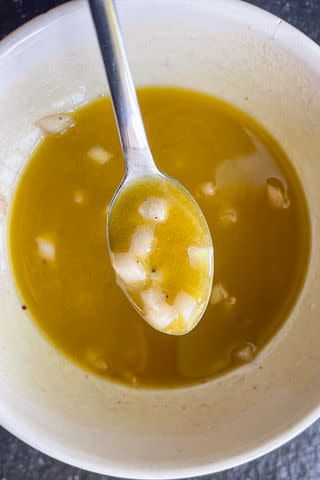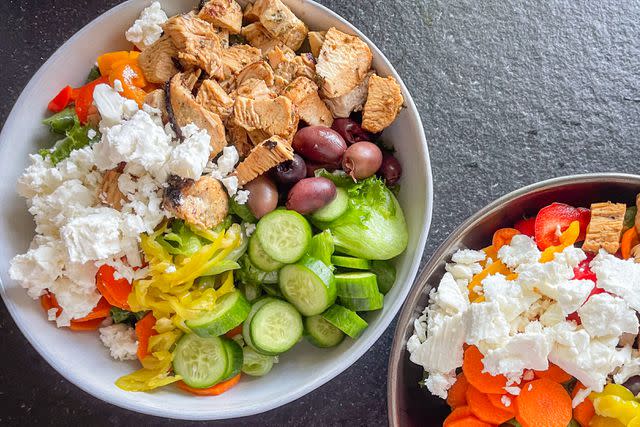I'm Making Ina Garten's 5-Minute Salad Dressing All Summer Long
I use it to dress salads, marinate chicken, drizzle on roasted vegetables, and more.

Simply Recipes / Photo Illustration by Wanda Abraham / Molly Adams
On one of my first days of culinary school, the class learned how to make a classic French vinaigrette. I was so proud of myself for my near-perfect emulsion that I carted my tangy vinaigrette all the way home on the N train from Manhattan to my apartment in Queens so my roommates could taste my masterpiece.
I couldn’t get over the fact that a lesson I learned on the spot left me with something delicious I could share with friends immediately and gave me the ratio I needed to replicate it for the rest of my life.
I even called my mom that evening and tried to explain to her how refreshing it was to learn something in school that was actually valuable.
I went to culinary school after completing an undergraduate degree at a private school that my parents worked their whole lives to save for, so let’s just say this wasn’t exactly music to her ears (the audacity of 22-year-olds!). That said, she still texts me for the recipe from time to time.
To save you the time, stress, and loans of culinary school (that I just paid off at age 37), Ina Garten, the queen of culinary basics, has a vinaigrette very similar to the one I learned many years ago. Her Creamy Vinaigrette is a staple in my fridge. I use it to dress salads, marinate chicken, and even brighten up roasted vegetables. It works well as a pasta or potato salad dressing, and couldn’t be easier to make.

Simply Recipes / Molly Adams
Ingredients for Ina Garten’s Creamy Vinaigrette
Olive Oil: You can’t make a good dressing without good olive oil. You don’t have to use the most expensive one available, but you want something you enjoy the taste of.
Red Wine Vinegar: I love the hard tang of red wine vinegar, but any vinegar or acid (like lemon juice) will work here. Champagne or sherry vinegar is also nice for added depth of flavor.
Dijon Mustard: A vinaigrette is all about the emulsion. When I learned the process in school, they made it overly fussy, instructing me to drip the oil slowly to ensure the emulsion didn’t break. Over the years I’ve learned that if you just dump everything into a tightly-sealed jar with a bit of Dijon and shake it like you mean it, you’ll end up with a perfect vinaigrette every time. The mustard adds a certain sharpness, but more importantly, it acts as a glue, bringing the oil and vinegar together in perfect harmony.
Honey: This is somewhat optional for me. I tend to like things that are very bracing and acidic, but if you prefer a more mellow flavor, honey will help round everything out. If you are vegan, swap it for a little pure maple syrup or even a sprinkle of sugar.
Shallot: Any allium will do here, but my favorite is shallot for its sophisticated flavor. My second choice is garlic, but if I’m using that, I like to finely grate it and let it soak in vinegar for a few minutes to remove the raw edge.

Simply Recipes / Molly Adams
Tips for Making This Vinaigrette
One trick I learned in culinary school for properly dressing greens is to pour some of the vinaigrette around a large mixing bowl, then add the greens and toss gently. This will prevent the delicate greens from wearing too much dressing and wilting.
This vinaigrette keeps very well. Tightly sealed, it will stay fresh in the fridge for up to four days. If the olive oil solidifies while in the fridge, a vigorous shake is all you need to bring it back to life. If you see my mom, tell her I shared my vinaigrette wisdom with you!
Get Recipe with Title: Ina Garten's Creamy Vinaigrette Recipe

Simply Recipes / Molly Adams
Read the original article on Simply Recipes.


